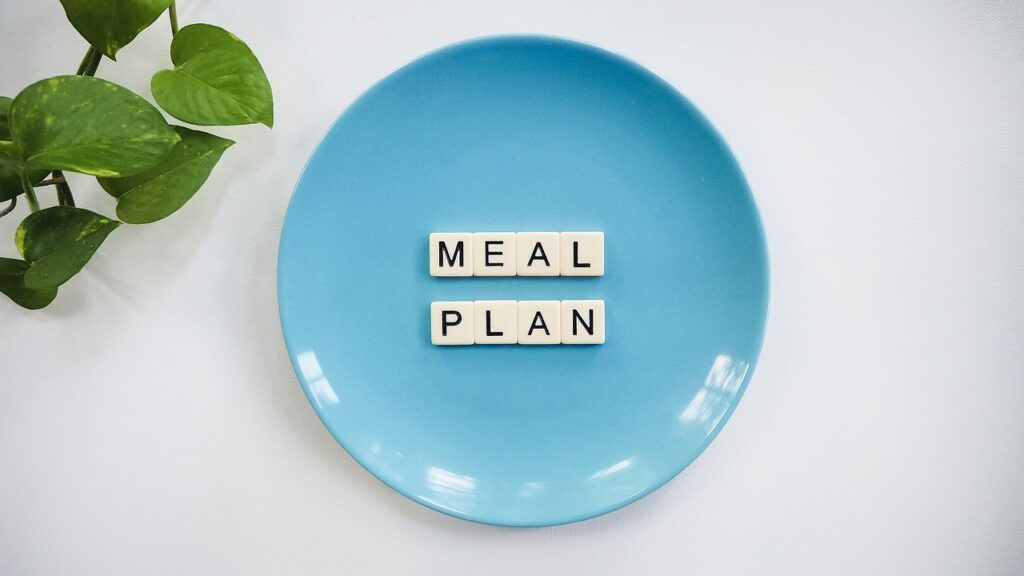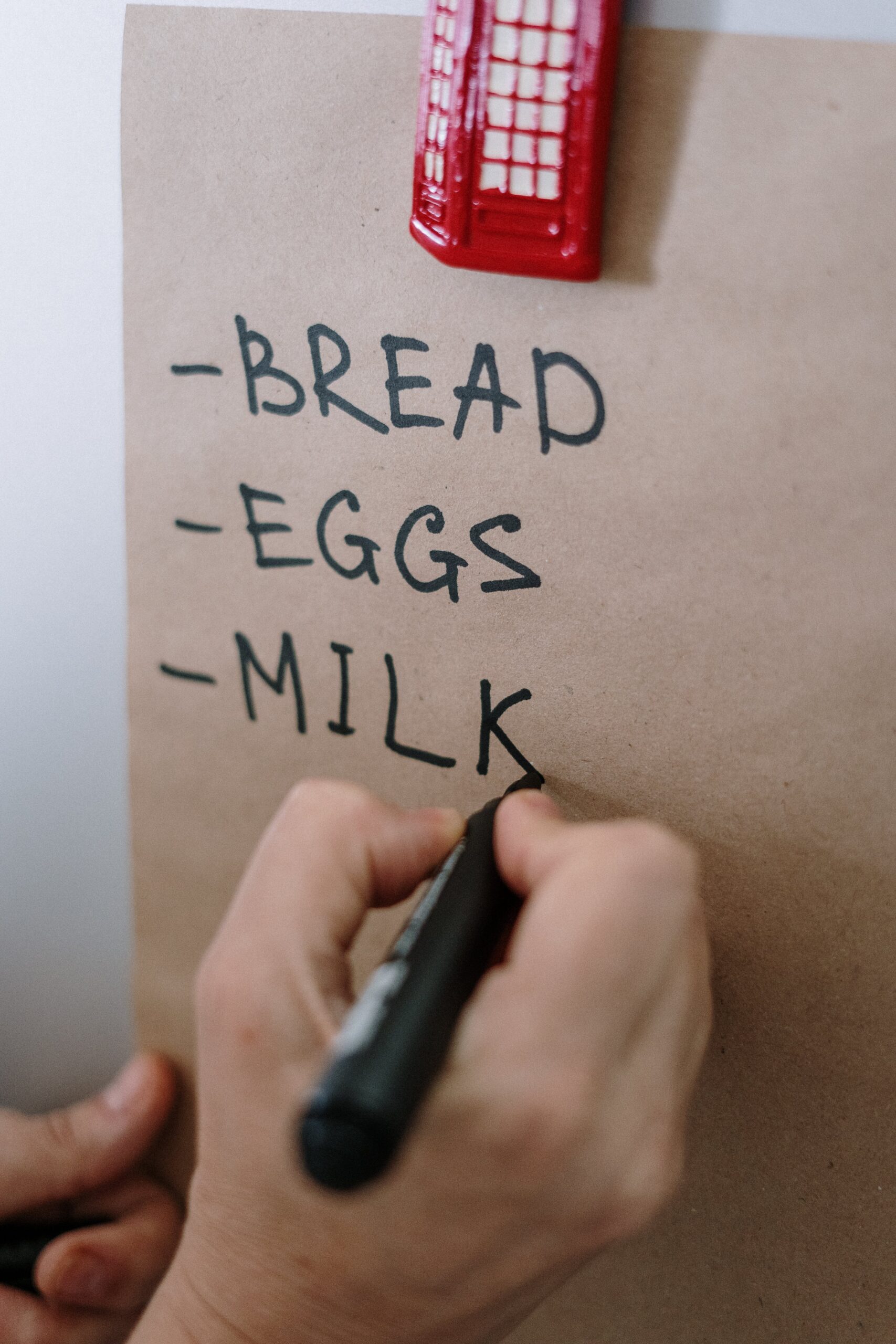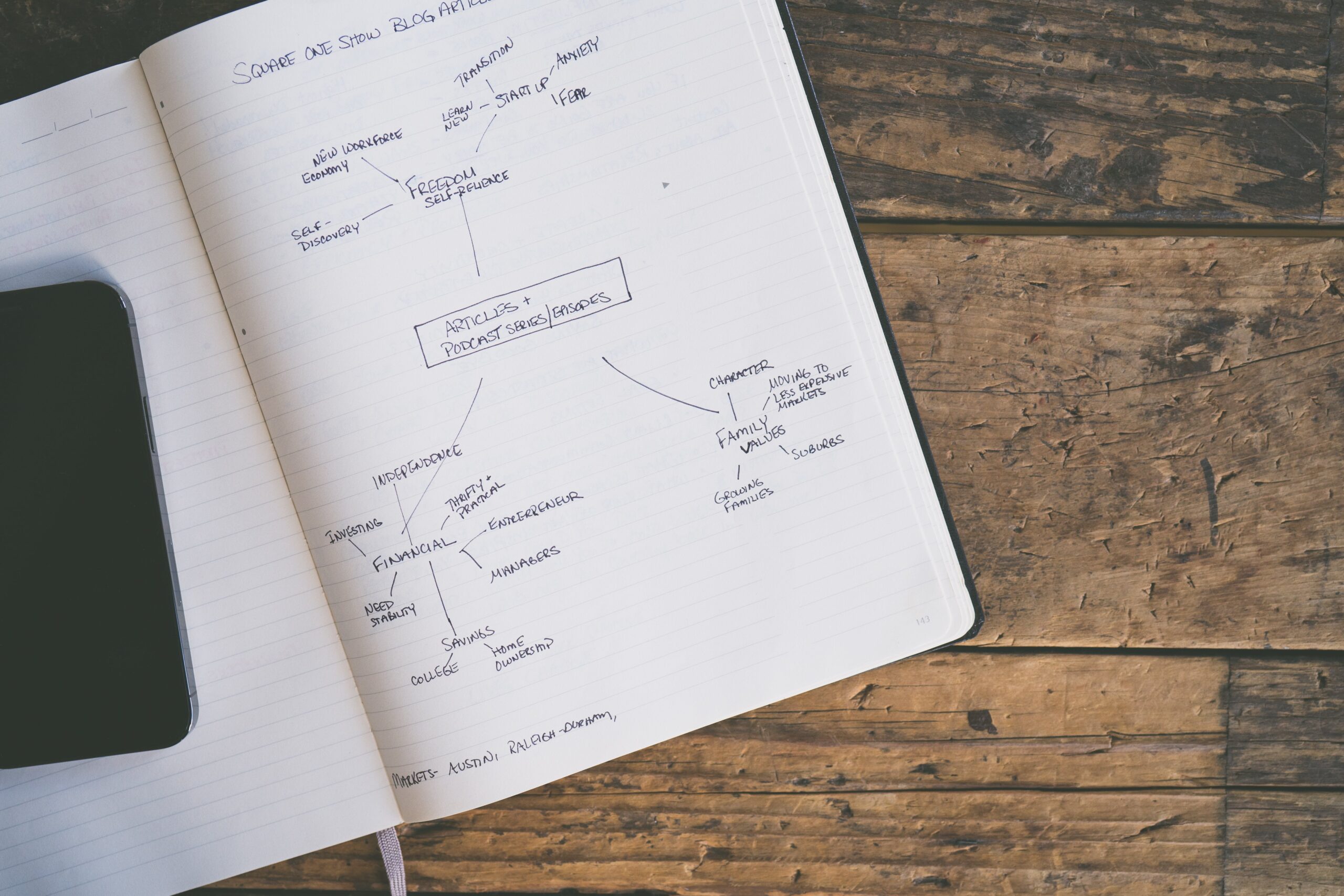Budget meal planning for beginners enables cost-effective and healthy eating habits. It often involves creating a weekly menu and shopping list.
A budget meal planning for a week is a great way to save money and ensure you have nutritious meals. Here’s a 7-day meal plan with recipes that are affordable and easy to prepare:
Meal Planning for Day 1
Breakfast: Oatmeal with Banana and Honey
- 1 cup rolled oats
- 1 banana, sliced
- 1 tablespoon honey
Lunch: Chickpea Salad
- 1 can chickpeas, rinsed and drained
- 1 cucumber, diced
- 1 tomato, diced
- 2 tablespoons olive oil
- 1 tablespoon lemon juice
- Salt and pepper to taste
Dinner: Spaghetti with Marinara Sauce
- 8 oz spaghetti
- 1 jar marinara sauce
- 1 onion, chopped
- 2 cloves garlic, minced
- 1 tablespoon olive oil
- Optional: Parmesan cheese
Meal Planning for Day 2
Breakfast: Yogurt with Granola and Berries
- 1 cup plain yogurt
- 1/2 cup granola
- 1/2 cup mixed berries (fresh or frozen)
Lunch: Vegetable Wrap
- 1 whole wheat tortilla
- 1/2 cup hummus
- 1 cup mixed veggies (carrots, bell peppers, lettuce)
Dinner: Lentil Soup
- 1 cup lentils
- 1 onion, chopped
- 2 carrots, chopped
- 2 celery stalks, chopped
- 4 cups vegetable broth
- 2 cloves garlic, minced
- 1 tablespoon olive oil
Meal Planning for Day 3
Breakfast: Scrambled Eggs with Toast
- 2 eggs
- 1 tablespoon milk
- Salt and pepper to taste
- 2 slices whole wheat bread
Lunch: Quinoa Salad
- 1 cup cooked quinoa
- 1/2 cup chopped cucumber
- 1/2 cup chopped bell pepper
- 1/4 cup chopped red onion
- 2 tablespoons olive oil
- 1 tablespoon lemon juice
Dinner: Chicken Stir-fry
- 1 chicken breast, sliced
- 2 cups mixed vegetables (broccoli, bell peppers, carrots)
- 2 tablespoons soy sauce
- 1 tablespoon olive oil
- 1 cup rice

Meal Planning for Day 4
Breakfast: Smoothie
- 1 banana
- 1/2 cup spinach
- 1/2 cup frozen berries
- 1 cup almond milk
Lunch: Tuna Salad Sandwich
- 1 can tuna, drained
- 1 tablespoon mayo
- 1 tablespoon mustard
- 1 pickle, chopped
- 2 slices whole wheat bread
Dinner: Baked Potatoes with Broccoli and Cheese
- 2 large potatoes
- 1 cup steamed broccoli
- 1/2 cup shredded cheese
Meal Planning for Day 5
Breakfast: Peanut Butter Toast with Apple Slices
- 2 slices whole wheat bread
- 2 tablespoons peanut butter
- 1 apple, sliced
Lunch: Black Bean Soup
- 1 can black beans, rinsed and drained
- 1 onion, chopped
- 1 clove garlic, minced
- 2 cups vegetable broth
- 1 teaspoon cumin
Dinner: Vegetable Curry
- 1 cup mixed vegetables (potatoes, carrots, peas)
- 1 can of coconut milk
- 1 tablespoon curry powder
- 1 cup rice
Meal Planning for Day 6
Breakfast: Cottage Cheese with Pineapple
- 1 cup cottage cheese
- 1/2 cup pineapple chunks
Lunch: Egg Salad
- 2 hard-boiled eggs, chopped
- 1 tablespoon mayo
- 1 teaspoon mustard
- Salt and pepper to taste
- Whole wheat crackers
Dinner: Tacos
- 1/2 pound ground beef or turkey
- 1 packet of taco seasoning
- 8 taco shells
- Lettuce, tomato, cheese, and salsa for toppings
Meal Planning for Day 7
Breakfast: Overnight Oats
- 1/2 cup rolled oats
- 1/2 cup milk or almond milk
- 1 tablespoon chia seeds
- 1/2 cup mixed berries
Lunch: Caprese Salad
- 1 cup cherry tomatoes, halved
- 1/2 cup mozzarella balls
- Fresh basil leaves
- 2 tablespoons olive oil
- 1 tablespoon balsamic vinegar
Dinner: Baked Chicken with Roasted Vegetables
- 2 chicken breasts
- 2 cups mixed vegetables (carrots, potatoes, bell peppers)
- 2 tablespoons olive oil
- Salt, pepper, and herbs to taste

The Benefits Of Meal Planning On A Budget
Stretching your food budget while eating well is an achievable goal. Let’s break down the benefits:
| Benefit | Explanation |
|---|---|
| Cost Savings | Less impulse buying and more strategic shopping. |
| Less Food Waste | Plan meals around what you already have. |
| Healthier Eating | Control ingredients, portions, and nutrition. |
| Time Efficiency | Prep ahead and save time on busy days. |
Essential Steps To Start Meal Planning
Embarking on the journey of meal planning is a savvy way to manage your budget and eat healthily. To ensure you set off on the right foot, follow these essential steps designed for beginners. Delve into a systematic approach to economize your food expenses without sacrificing nutrition or flavor.
Setting A Realistic Budget
Determine your weekly or monthly food expenditure by considering income and other expenses. Stick to this budget to avoid overspending. Use a simple spreadsheet or budgeting app to monitor your spending and adjust accordingly.
Inventory Check: Using What You Have
Take stock of your pantry, fridge, and freezer. List all items. This list prevents unnecessary purchases and helps you use existing ingredients effectively. Base your meal plan around these items to reduce waste and save money.
Creating A Balanced Meal Plan
Balance is key to a healthy diet. Aim for a variety of proteins, vegetables, healthy fats, and carbs. Use online tools or a balanced meal chart as a guide. A diverse weekly menu ensures nutritional needs are met and keeps meals interesting.
Building A Master Shopping List
After planning your meals, draft a shopping list. Organize items by category for efficiency: produce, dairy, proteins, and pantry staples. Double-check your inventory to avoid duplicates. Keep the list handy during shopping as a reminder of your budget.

Learning The Basics Of Nutrient Diversity
Understand the importance of different nutrients for a well-rounded diet. Each meal should include a mix of carbs, fats, and proteins. Add a variety of colors to your plate with fruits and vegetables. This simplistic approach promotes a diverse intake of vitamins and minerals, crucial for health.
Smart Shopping Strategies
Welcome to the world of Smart Shopping Strategies, a game-changer for every beginner in budget meal planning. Learn to navigate the grocery store like a pro, snag the best deals, and understand labels so every dollar stretches further. Follow these simple yet effective tactics to make the most of your shopping trips without breaking the bank.
Best Practices For Grocery Shopping
- Create a meal plan before you shop to avoid impulse buys.
- Stick to a shopping list to focus on necessities.
- Shop the perimeter of the store first for fresh food staples.
- Avoid shopping hungry; it leads to unnecessary purchases.
- Compare unit prices to ensure you’re getting the best deal.
Grocery List
Produce:
- Bananas
- Cucumber
- Tomatoes
- Mixed berries
- Carrots
- Celery
- Spinach
- Broccoli
- Apples
- Potatoes
- Bell peppers
- Pineapple chunks
- Cherry tomatoes
- Fresh basil
Proteins:
- Eggs
- Chicken breasts
- Canned tuna
- Ground beef or turkey
- Canned chickpeas
- Canned black beans
- Lentils
- Cottage cheese
Dairy:
- Milk or almond milk
- Plain yogurt
- Shredded cheese
- Mozzarella balls
Grains:
- Rolled oats
- Granola
- Whole wheat bread
- Whole wheat tortillas
- Quinoa
- Rice
- Spaghetti
- Taco shells
Pantry:
- Honey
- Olive oil
- Lemon juice
- Hummus
- Soy sauce
- Peanut butter
- Mayo
- Mustard
- Pickles
- Vegetable broth
- Coconut milk
- Curry powder
- Taco seasoning
- Salsa
- Chia seeds
- Balsamic vinegar

Preparation And Storage Tips
Welcome to the world of savvy meal planning, where every penny and minute counts. Equipping oneself with preparation and storage tips is the cornerstone to mastering budget meal planning. Let’s embark on this journey to a well-organized kitchen and wallet.
Cooking In Batches To Save Time And Money
Cooking in batches is a game-changer for meal planners. It means cooking large quantities at once. This practice cuts down on energy costs and saves time.
- Plan your meals for the week.
- Gather ingredients in bulk, taking advantage of any sales or discounts.
- Cook multiple portions of a dish.
- Set aside what you need for immediate meals.
Protip: Cool down cooking food before refrigerating to maintain safety and taste.
Proper Food Storage For Freshness And Safety
Storing food correctly ensures it stays fresh and safe to eat. Poor storage leads to spoiled food and wasted money.
| Food Item | Storage Method | Shelf Life |
|---|---|---|
| Vegetables | Refrigerate in crisper | 1-2 weeks |
| Meat | Freeze if not used in 2 days | 3-6 months |
| Leftovers | Airtight containers | 3-4 days |
Always label your containers with names and dates. Use airtight containers to keep out moisture and contaminants.
Reinventing Leftovers To Minimize Waste
Leftovers are not just reheated meals; they’re an opportunity to create new dishes. Get creative to minimize waste and keep meals exciting.
Maintaining Your Meal Plan And Budget
Mastering the art of maintaining your meal plan and budget propels you toward success. Missteps can lead to wasted food or overspending. Embrace routines and track finances to stay on course. Let’s explore key strategies for sustained budget meal planning.
Weekly Meal Planning Routine
Establishing a weekly meal planning routine organizes your shopping and cooking. This ensures variety and meets dietary needs without unnecessary spending. A robust routine includes:
- Inventory Check: Review what’s available before planning.
- Menu Creation: Craft a week’s menu around items you already have.
- Shopping List: Itemize needs to prevent impulse buys.
- Cook in Batches: Prepare meals ahead to save time and resources.
- Leftover Solutions: Plan for leftovers; another meal or ingredient.
Adjusting The Plan As Needed
Flexibility is key. Adjusting the plan when unexpected events occur keeps you from straying from your budget. Adapt by:
- Swapping Meals: Use what’s available if you run out of an ingredient.
- Seasonal Tweaks: Incorporate seasonal, cost-effective produce.
- Scaling Recipes: Alter portion sizes to fit your immediate needs.
Tracking Expenses And Savings Over Time
A crucial element is tracking expenses and savings. Monitoring your spending habits reveals how well the meal plan works. Implement these tips:
- Receipt Organization: Keep receipts for review.
- Expense Tracking: Note all spending in a budget tracker.
- Review Regularly: Compare expenses monthly to see trends and savings.
Remember, short-term management leads to long-term savings. Stay diligent; the benefits will amass over time.
Final Thoughts
Embracing budget meal planning unlocks a world of savings and satisfaction. Start small, stay consistent, and enjoy the journey. Remember, every penny saved is a step towards financial confidence. So grab your shopping list, get creative in the kitchen, and watch your wallet thank you.
Happy planning!
Frequently Asked Questions Of Budget Meal Planning For Beginners
How Should A Beginner Start A Meal Plan?
To start a meal plan, assess your dietary goals and preferences. Choose simple, nutritious recipes for variety. Plan for all meals and snacks, shop for ingredients and prep food ahead of time. Track your progress and adjust as needed.
How To Budget $100 A Week For Food?
Plan meals in advance and stick to a shopping list. Choose generic brands, buy in bulk, and focus on seasonal produce. Opt for plant-based proteins to save money. Utilize coupons and shop sales. Cook at home to avoid eating out.
How Can I Eat For Under $30 A Week?
To eat on a budget of under $30 a week, plan meals around affordable staples such as rice, beans, and pasta. Buy in bulk, use coupons, and stick to a shopping list. Opt for seasonal produce and avoid eating out.
Cook at home and leverage leftovers.
What Are The Three P’s For Eating On A Budget?
The three P’s for eating on a budget are Plan, Purchase, and Prepare. Plan meals ahead, purchase cost-effective ingredients, and prepare meals at home to save money.







